Disney’s Next 100 Years Need to Focus on One Thing: Animation
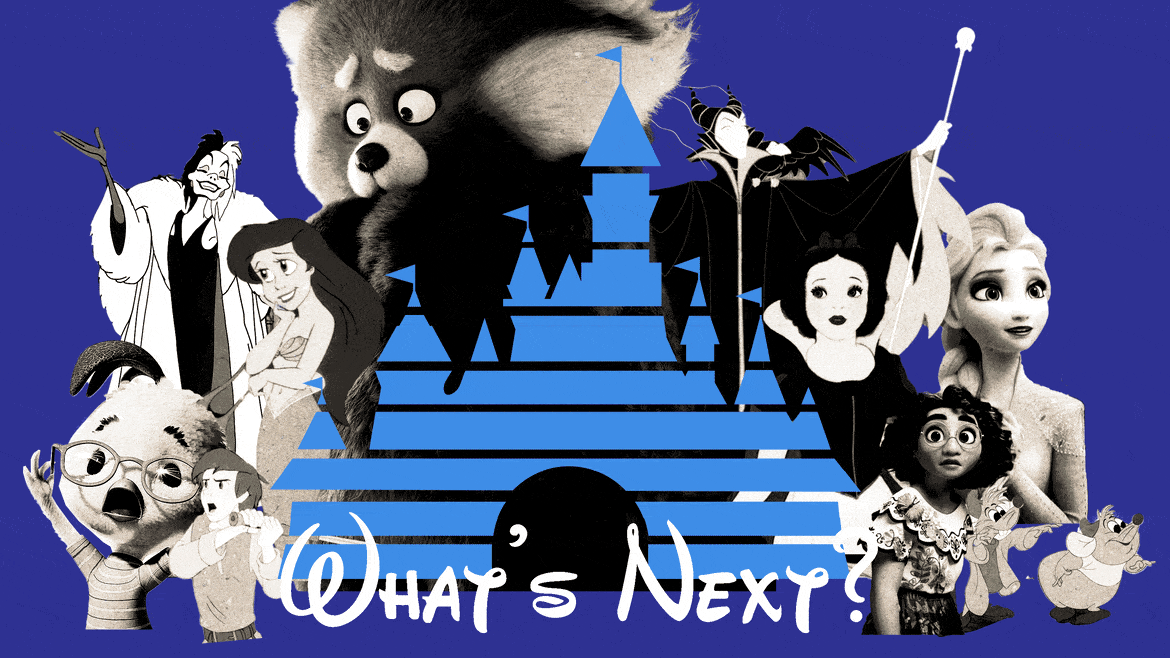
Since Walt and Roy Disney took up their pencils in a garage 100 years ago this month, the organization they built has become the most recognizable entertainment brand in the world. Just saying “Disney” conjures up countless images of classic animation, from Sorcerer Mickey in Fantasia to Cinderella dancing with Prince Charming, from “Circle of Life” in The Lion King to Elsa letting it go in Frozen.
The Walt Disney Company has taken over the world, and while doing so, its identity has shifted considerably—especially since the mid-2000s. A corporation synonymous with animation continues to produce animated movies, sure, but its scope is far bigger than Walt could have ever fathomed. After bolstering its animation brand by acquiring rival studio Pixar in 2006, Disney added Marvel in 2009, Lucasfilm in 2012, and freaking 21st Century Fox, of all things, in 2019.
Celebrate Disney’s 100th Anniversary by Revisiting This Horrifying Film
As Disney puts its hand into every proverbial cookie jar (or honey pot, as Winnie the Pooh would have it), its reach has become monumental. But while the company’s scope increases, its identity becomes less and less clear—especially where its once-lifeblood, Disney Animation Studios, is considered. Its second century is on its way to looking quite different from its first—but it’s not too late to turn things back around.
Walt Disney Animation Studios has always gone through periods where its output has suffered a downturn. (This great Polygon article explores this in-depth.) After the huge success of Snow White, World War II almost shut the company down. To save itself, Disney practically became an extension of the US military, making war propaganda films like Der Fuehrer’s Face and Victory Through Air Power. After rebounding by the 1950s, the company almost went under again, after the extremely costly (and beautiful) Sleeping Beauty bombed at the box office.
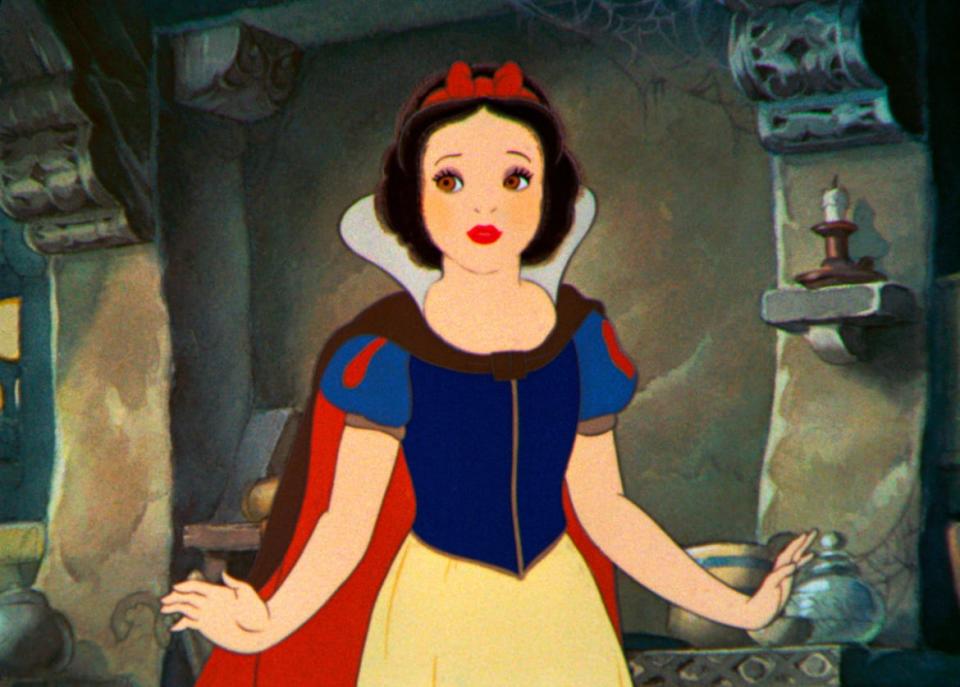
Snow White
Another turnaround came decades later. In 1985, Disney released The Black Cauldron, the most expensive animated movie yet made. The dark fantasy pic was a financial disaster, and the film—you guessed it—almost ruined the company again. But then came the Disney Renaissance, which was ushered in the following year by The Great Mouse Detective. By 1989, Disney’s top-dog status was cemented by the blockbuster The Little Mermaid, which brought prosperity back.
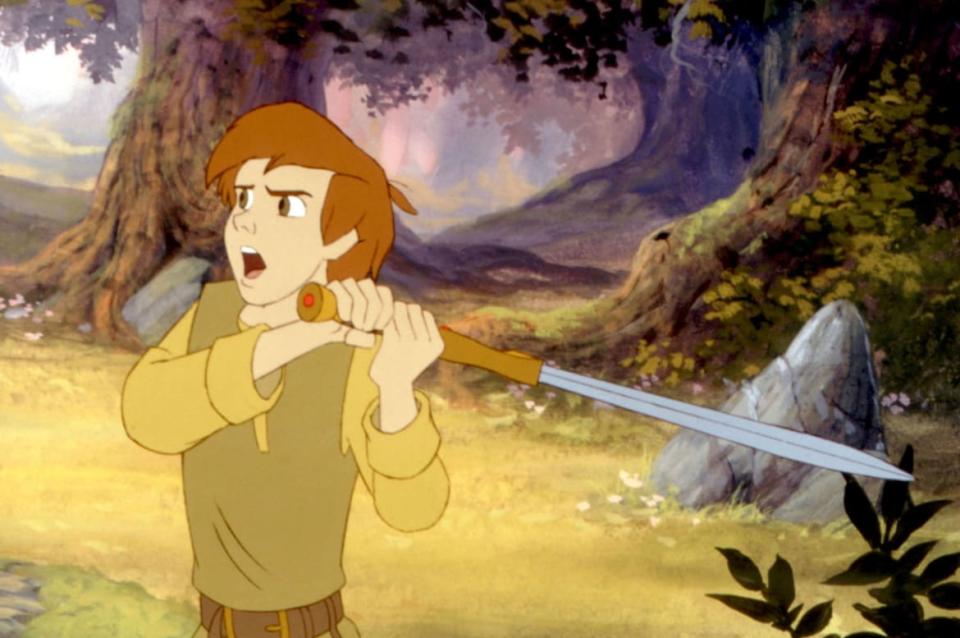
The Black Cauldron
It’s the studio’s 1990s animated output that shaped our modern, rosy impression of Disney. This Renaissance was a period of unfettered creativity, defined by exhilarating hand-drawn animation, kaleidoscopic explosions of color, Broadway-style musical numbers, legendary villains, and unforgettable sidekicks. Who wasn’t moved by Beauty and the Beast, the first animated feature nominated for Best Picture; Aladdin and Robin Williams’ performance as the Genie; or The Lion King, a twist on Hamlet that shattered box office records, while delivering a powerhouse emotional story?
The 12 Best Animated Movies and Shows of 2022
Even the minor films of the period, like Pocahontas, gave us a sumptuous, vivid color palette. It went darker than ever in its adaptation of The Hunchback of Notre Dame, story-wise and cinematically. For Tarzan, Disney implemented its unique deep-canvas technology to create incredibly immersive vine-swinging sequences, paired with a Phil Collins soundtrack that could turn the most stoic person to mush.
But then came the doldrums of the early 2000s. Atlantis: The Lost Empire and Treasure Planet were notable failures, deviating from the musical formula for less brightly colored stories. But Disney reached its undeniable nadir with its worst-ever film, 2004’s Home on the Range. From its pathetic villain, over-reliance on toilet humor, and sexual politics that felt gross even 20 years ago, Home on the Range felt emblematic of a studio running on empty.
It was followed by Disney’s first CGI-animated film, the extremely ugly, poorly received Chicken Little. Pixar (whose films Disney distributed) and DreamWorks were more deft with CGI and starting to run circles around the studio, both critically and commercially. Perhaps knowing it needed to make a quick change, Disney swallowed up Pixar like Monstro consumed Pinocchio, allowing it to absorb amazing new creatives and take even more credit for Pixar’s increasingly high-quality releases. With Pixar’s help, Disney was back on top of the animation totem pole by the end of the 2000s and through the mid-2010s.
Every time Disney has fallen down, it’s bounced back up. But its mid-2010s upswing, courtesy of Pixar, hasn’t translated to its own animation crop. This stat is telling: Disney has released only eight non-Pixar original animated films in the last decade, with two sequels rounding out the pack of 10. And two of its last three original films, Raya and the Last Dragon and Strange World, both failed to make much of an impression. (At least Frozen 2, which was less critically successful than its predecessor, made record-setting big bucks.) Disney appears to be running on fumes when it comes to original ideas, leaning on sequels and live-action reboots instead.
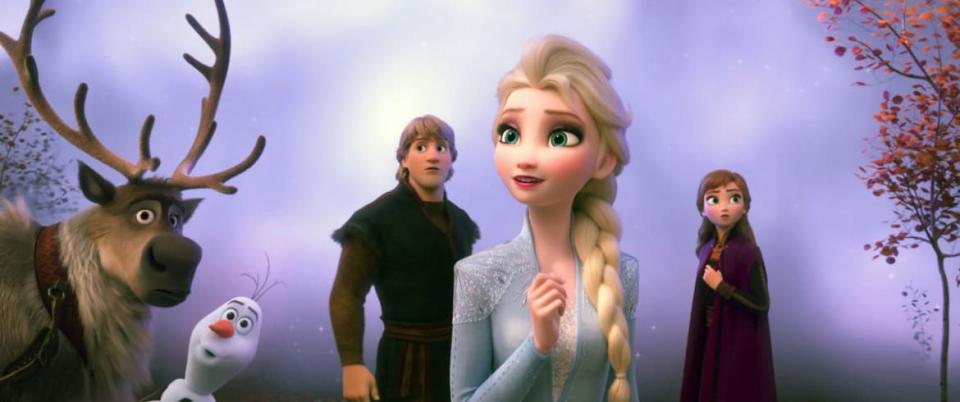
Frozen
Even Pixar has suffered from this. Before Disney’s acquisition of the company, 16 percent of its films were sequels. After the acquisition, that number increased to 40 percent. It’s disheartening to see such innovators be reduced to a studio of sequels and prequels (and whatever Lightyear was supposed to be). For the studio to regain its prestigious status, it's going to have to make more Turning Reds and fewer Toy Story installments.
In order to regain relevancy and innovation, Pixar is going to have to return to the original content that defined its prestigious brands in the first place. The same goes for Disney Animation Studio itself. The good news is they both have untold stories in the lineup: Pixar’s next film is the original story Elemental in June, while Disney has November’s Wish. That one is an inspired by a pre-existing character: the famous wishing star from Pinocchio. That’s a twist on a traditional reboot, at least.
Disgraced Disney Head John Lasseter Returns With ‘Luck,’ the Year’s Worst Animated Movie
Even so, original or not, the films themselves just don’t resonate like they used to. The reason is pretty darn sinister: Disney films have lost their villains. Villains have provided some of the most memorable moments, songs, and stories in the studio’s history. Many of them are even better remembered than the heroes themselves: I have such fond childhood memories of being utterly terrified of Snow White’s Evil Queen, staring in awe at Ursula in The Little Mermaid, and aspiring to be as savage as Peter Pan’s Captain Hook. Okay, maybe those aren’t all fond, but they helped shape who I am!
It’s no coincidence that all the films that brought Disney out of potential ruin and back on top (Cinderella, One Hundred and One Dalmatians, The Great Mouse Detective, The Little Mermaid) had excellent villains. A strong villain makes for a strong story and a more sympathetic hero, and crafting this dynamic is the one thing Disney has absolutely dominated throughout its 100 years. No other animation studio has a collection of iconic villains like Disney does, and they probably never will.
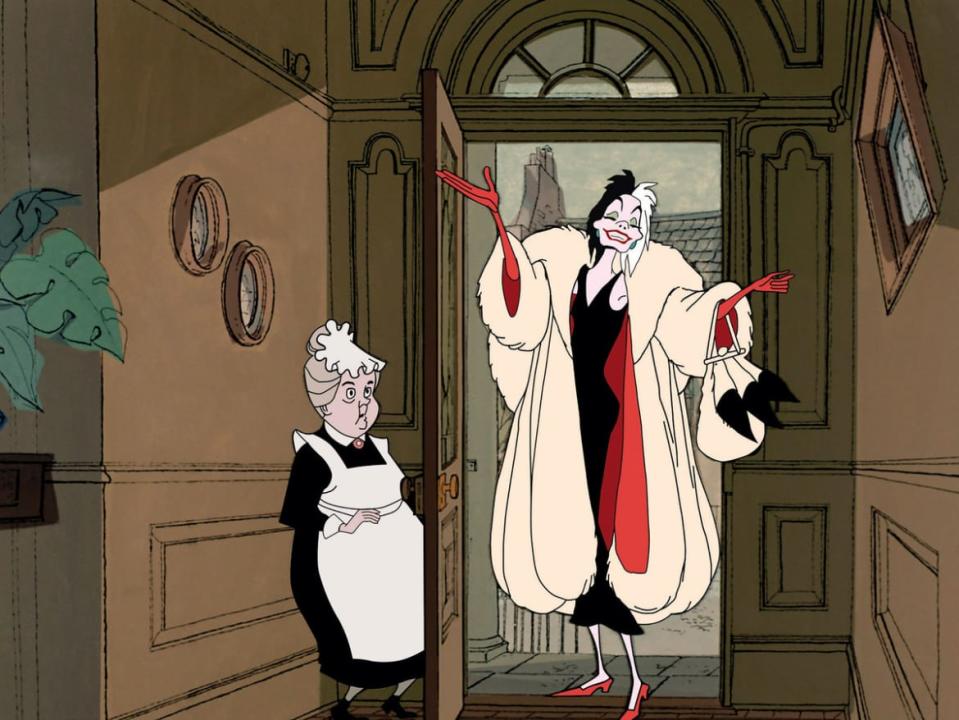
101 Dalmatians
But Disney’s weird pivot to metaphorical villains—pitting its heroes against society, the environment, etc.—has made its recent output feel less meaningful. Without a personified, outright evil obstacle to surmount, the stories have less of a hold on us.
But the biggest difference between Disney’s lackluster present and its checkered past is that it’s never had the amount and level of competition it has now. Generations of Disney veterans, like Jeffrey Katzenberg, have gone on to start their own studios, many of which now stand toe-to-toe with their elders. DreamWorks is proving to be an especially sharp thorn in Disney’s side, maybe even more so than it was in the Shrek-filled early 2000s. But there’s also Illumination and its golden minions, stop-motion star Laika, and Irish up-and-comer Cartoon Saloon.
With Phenomenal ‘Puss in Boots,’ DreamWorks Has Bested Disney
Other entertainment companies with successful branches in other media are also finding comparable success in animation. Take Sony, which stunned everyone with the Oscar-winning Spider-Man: Into the Spider-Verse. Even Netflix is becoming a major player in animation with Guillermo Del Toro’s Pinocchio looking like this year’s Oscar favorite for Best Animated Feature—an award Disney/Pixar has lost just six times since the category's inception in 2001. And that’s just the studios making animation in English!
A big reason Disney’s lost its stranglehold in recent years is its confusing approach to theatrical releases. Disney+ has especially hamstrung Pixar, whose Lightyear is the only film given a proper cinema release since the start of the pandemic. Raya and the Last Dragon never made it onto big screens, and Encanto only had a short theatrical run, before finding its audience primarily on streaming.
But Disney proper has also faltered since the pandemic, when it committed to wishy-washy hybrid releases for films that would normally dazzle at the box office. While it gave movies like Black Widow a simultaneous Disney+ and theatrical release, Pixar movies like Soul and Turning Red were relegated to Disney+ exclusives in the US. When you give the same-day option between watching a film at home or in the theaters, you practically program your audiences to avoid the outdoors. And that’s especially true of animation, which Disney doesn’t seem to think deserves a proper theatrical experience.
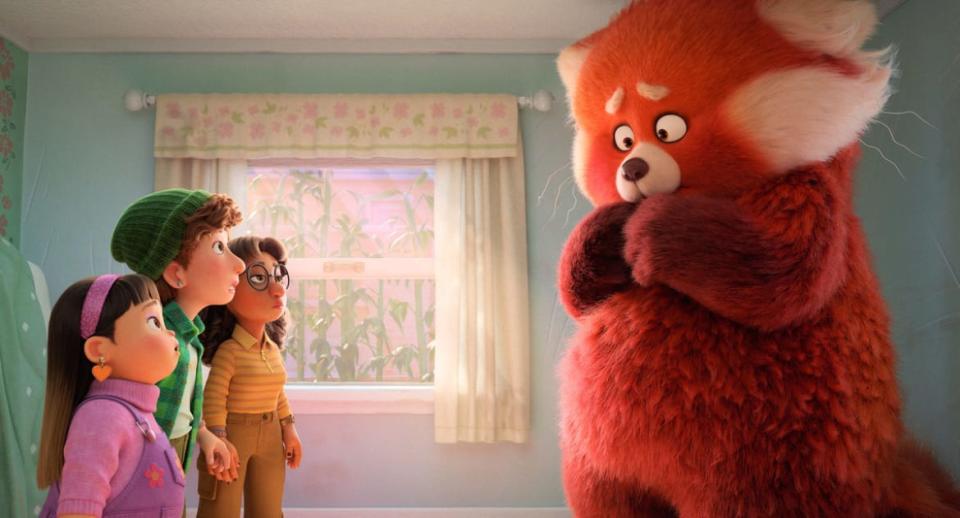
Turning Red
That’s proved to be a big mistake. You can blame the pandemic all you want, but the theatrical-vs.-streaming divide is an issue that Disney’s competitors have avoided, as they’ve committed to giving their animated features wide releases.
Here’s an unbelievable statistic that I had to calculate multiple times to make sure I wasn’t losing it: The past eight Disney and Pixar films have earned a combined $1.019 billion at the worldwide box office. Illumination’s most recent film, Minions: The Rise of Gru, raked in $939.6 million—as much as the past EIGHT Disney/Pixar films. That lineup consists of Raya and the Last Dragon, Encanto, Strange World, Onward, Soul, Luca, Turning Red, and Lightyear, only half of which made it into theaters at all in the United States.
‘Minions: The Rise of Gru’ Is the Year’s Most Body-Positive Movie
What’s most unbelievable about this weak box office turnout is how it could have easily been avoided. According to Nielsen, Encanto and Turning Red were the two most-streamed movies of 2022, with Encanto leading by a stunning 16 billion minutes. If Disney had given the film a full-fledged theatrical campaign, instead of its tepid holiday run at the cinema, there’s no doubt in my mind it would have made more than Minions. All this is to say that, when Minions: The Rise of Gru has made comparable money to your past eight features combined, maybe it’s time to change your strategy.
Beyond the lack of theatrical releases, there’s also a matter of style. After the CGI monstrosities of the early 2000s—alongside Chicken Little, there was the bland Dinosaur and Bolt—Disney films have been nothing less than visually stunning, CGI films included. But a shift is in the air, brought on by the collage-like Spider-Verse, and followed up by DreamWorks, which merges the worlds of hand-drawn and computer-generated images.
It’s a smart play for these studios, one which Disney hasn’t picked up on itself. Its last 2D-animated film was 2011’s Winnie the Pooh, and its CGI films have rarely been experimental in the ways its competitors are. There’s something incredibly discomforting about Disney following behind on trends when it was the original trendsetter, starting all the way back in 1923.
There is a very real chance that future generations won’t even consider animation when thinking about Disney. For a company whose films have shaped so many lives for decades, that’s a chilling thought. (Just take a look at its theme park expansions to get a sense of where its priorities have laid—franchises.) Animation certainly isn’t dead, but if Disney doesn’t make some considerable changes to make its films more individual, impressive, and visionary again, the company may be unwittingly burying its very foundation.
The Secrets of ‘Encanto,’ the Magical New Disney Film Celebrating Colombian Culture
But hope is not lost. Despite their more meager commercial success, the last three Disney animated films marked new creative endeavors, finding the company dabbling in genres they haven’t touched in years. One of the key elements that made the studio stand out—songs!—is still a crucial part of the company’s formula, if Encanto is any indication. And Wish looks like it’s going to bring back Disney’s X-factor: the traditional princess movie.
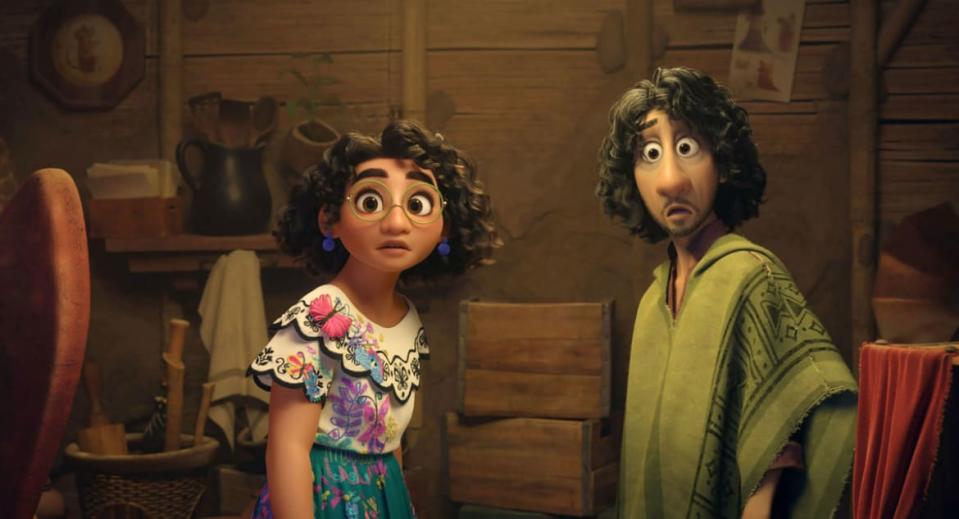
Encanto
If Disney can bring back world-class villains, reinvent visually, and commit to theatrical releases, its animation studio could be stronger than it’s ever been. The future is exciting. Who knows what’s waiting just around the riverbend?
Get the Daily Beast's biggest scoops and scandals delivered right to your inbox. Sign up now.
Stay informed and gain unlimited access to the Daily Beast's unmatched reporting. Subscribe now.


